The Act Establishing the War Department
[1st Congress, Chapter VII, Sess. 1, 1 Stat. 49 (1789)]

On April 7, 1789, the Department of War was created by the First Congress. When the First Congress met, one of its primary responsibilities was to establish the executive departments that would assist President Washington administer the new federal government. Washington’s first cabinet was composed of three members, Secretary of State (Thomas Jefferson), Secretary of War (Henry Knox), and Secretary of Treasury (Alexander Hamilton), along with Attorney General Edmond Randolph.
The entire Act consists of four short sections that fit on two printed pages. Click here for a link to the Act. The entire Act is copied below.
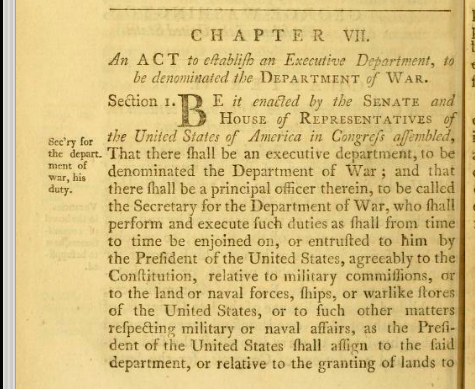
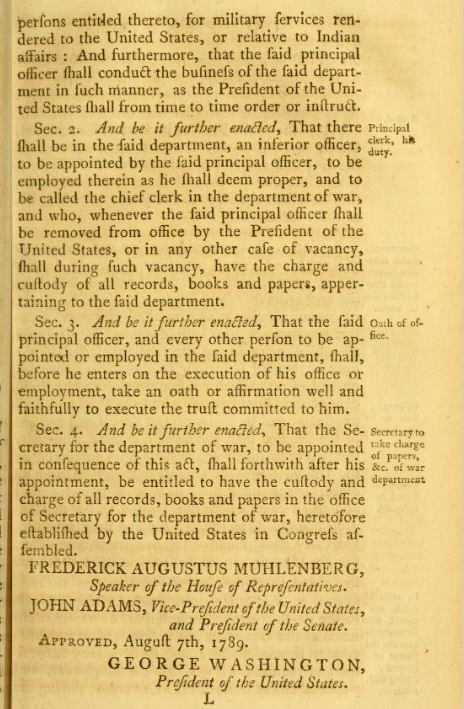
After creating the War Department, Congress delayed establishing the Army until the last day of the first Session of the First Congress. On September 29, 1789, Congress adopted an “Act to Recognize and Adapt to the Constitution of the United States” the “establishment of the Troops” inherited from the Confederation Congress, raised under the Articles of Confederation. Click here for a link to the Army Act, the title of which is copied below.
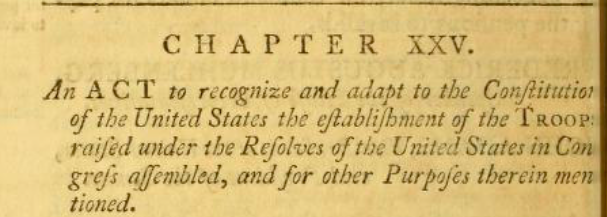
Because of concerns over standing armies and Anti-Federalist distrust of the new federal government, the Army was required to be re-stablished every two years. The Army Clause of the U.S. Constitution (Article I, Sec. 8, Clause 12) provides that “The Congress shall have Power to…raise and support Armies, but no Appropriation of Money to that Use shall be for a longer Term than two Years….” In effect, the Army Clause represents a compromise whereby Congress would have the power to create a standing army, but the Army would have to be re-established by every succeeding Congress as a check on Presidential authority.
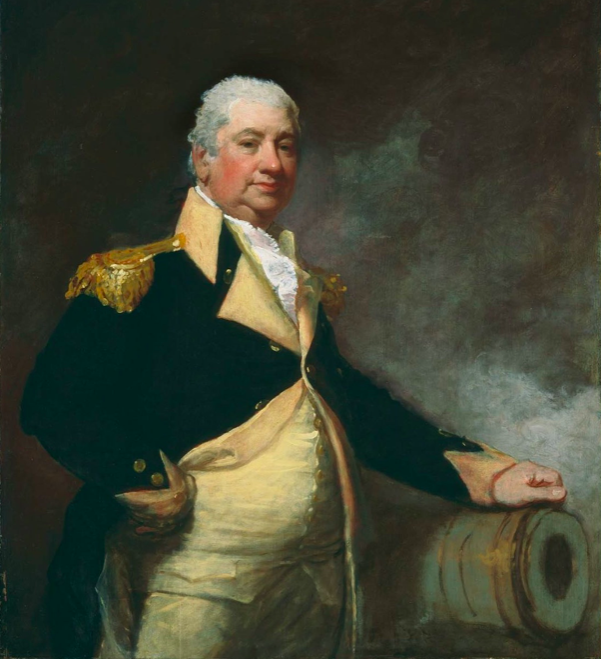
Secretary of War Henry Knox
General Henry Knox was appointed by President Washington as the first Secretary of War. Beginning in 1785, Knox had served in the same capacity as the head of the War Department under the Articles of Confederation. During the Revolutionary War, General Knox was a trusted aide to General Washington, serving as the chief artillery officer of the Continental Army.
In his role as Secretary of War, Knox oversaw the military, worked to improve the preparedness of local militias, implemented the Militia Act of 1792, oversaw the development of coastal fortifications, and supervised the conduct of the Northwest Indian War.
In reviewing the state militias, Knox reported that only 20% of the 450,000 members of the state militia were capable of arming themselves at their own expense for militia service as required by the Militia Act. Click here for a link to the Militia Act of 1792.
From 1789 until 1798, the Secretary of War was responsible for all military affairs, including naval operations. The Department of the Navy was created in 1798. Click here for a link to the Act Establishing the Navy.
The War Department existed from 1789 to 1947 when it split into the Department of the Army and the Department of the Air Force. It was reorganized in 1949 into the Department of Defense.
Debate over Standing Armies
The Anti-Federalists preferred that national defense should rest with decentralized state militias. Brutus, one of the most influential Anti-Federalists opposing ratification of the Constitution, argued that standing armies “are dangerous to the liberties of a people…not only because the rulers may employ them for the purposes of supporting themselves in any usurpation of powers, which they may see proper to exercise, but there is a great hazard, that any army will subvert the forms of government, under whose authority, they are raised, and establish one, according to the pleasure of their leader.”
The Federalists disagreed and supported a robust federal government equipped with a full time military. Washington and the officers of the Continental Army were well aware of the inadequacies of poorly trained state militias during the Revolutionary War. Alexander Hamilton argued in Federalist No. 23 that the power of the federal government to provide for the common defense “ought to exist without limitation: because it is impossible to foresee or define the extent or variety of national exigencies, or the correspondent extent & variety of the means which may be necessary to satisfy them.” Federalist James Wilson argued during the Pennsylvania Convention that “the power of raising and keeping up an army, in time of peace, is essential to every government. No government can secure its citizens against dangers, internal and external, without possessing it, and sometimes carrying it into execution.”
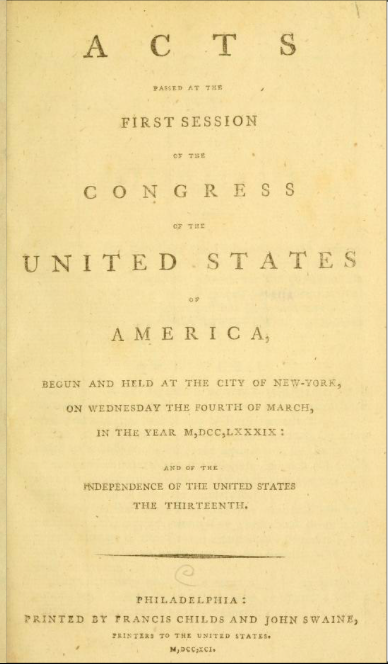
The Creation of the Continental Army
The Continental Army was created by Resolution of the Second Continental Congress on June 14, 1775. It consisted of the 22,000 militia positioned around Boston and an additional 5,000 militia in New York. The Continental Army was originally placed under the control of a five member civilian board. On June 15, 1775, George Washington was unanimously selected as Commander-in-Chief. Click here for a link to George Washington’s Commission contained in the Journals of the Second Continental Congress, dated June 17, 1775. Click here for the Rules and Regulations governing the Continental Army dated June 30, 1775.
Shortly after Washington was selected to lead the Continental Army, the Continental Congress named four Major Generals: Charles Lee, Philip Schuyler, Artemas Ward and Israel Putnam, along with eight Brigadier-Generals. Fans of the Hamilton musical will recognize the names Philip Schuyler (Alexander Hamilton’s father-in-law) and Charles Lee.
After the Revolutionary War, the Continental Army was disbanded, leaving only one regiment to guard the western frontier and one artillery battery to guard West Point. The first full regiment of Regular Army infantry, the 3rd Infantry Regiment, was not formed until June of 1784.
Additional Reading:
Army Center for Military History
Establishment of the War Department (Archives of the House of Representatives)